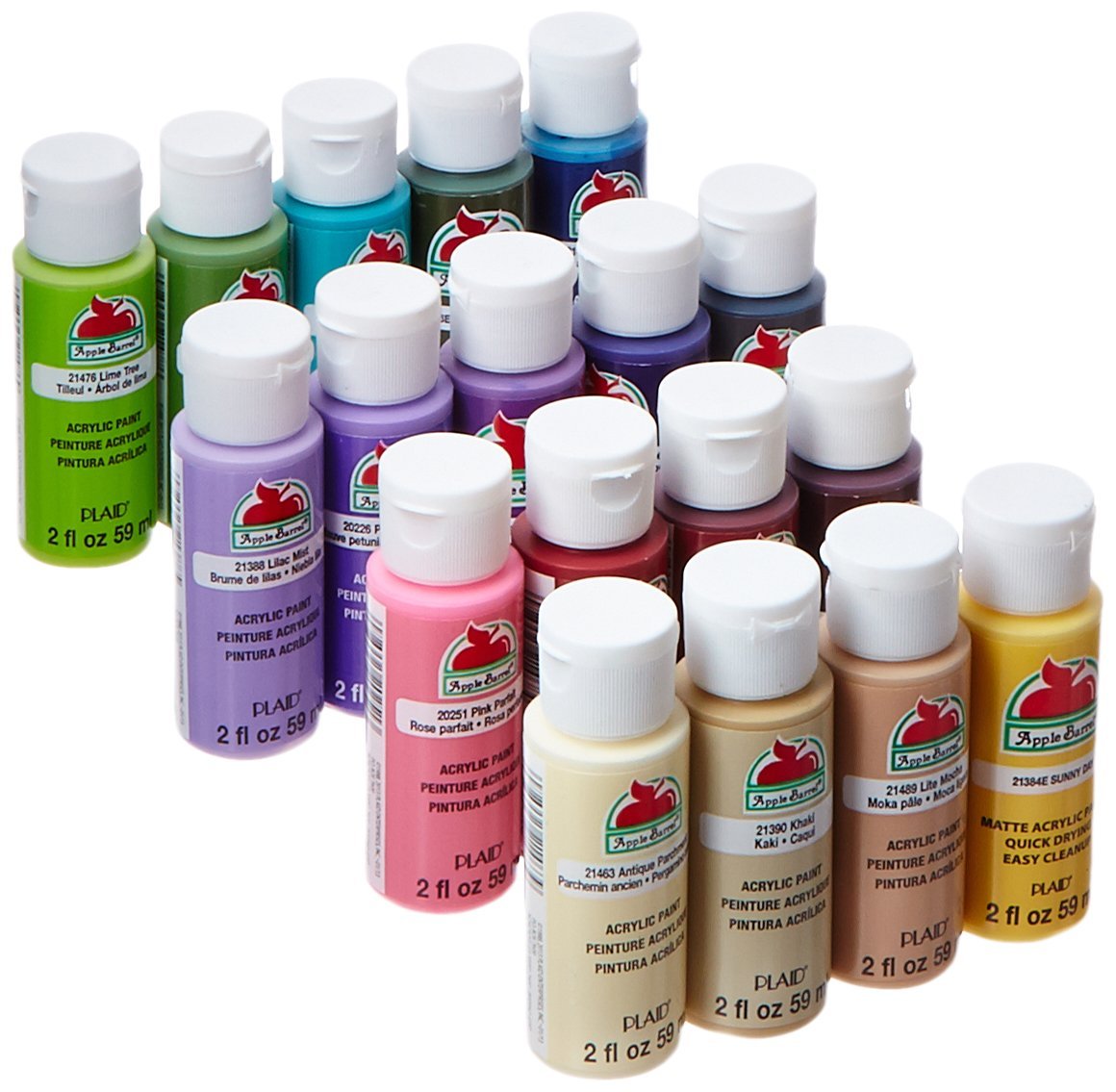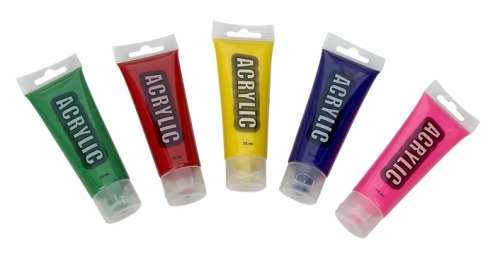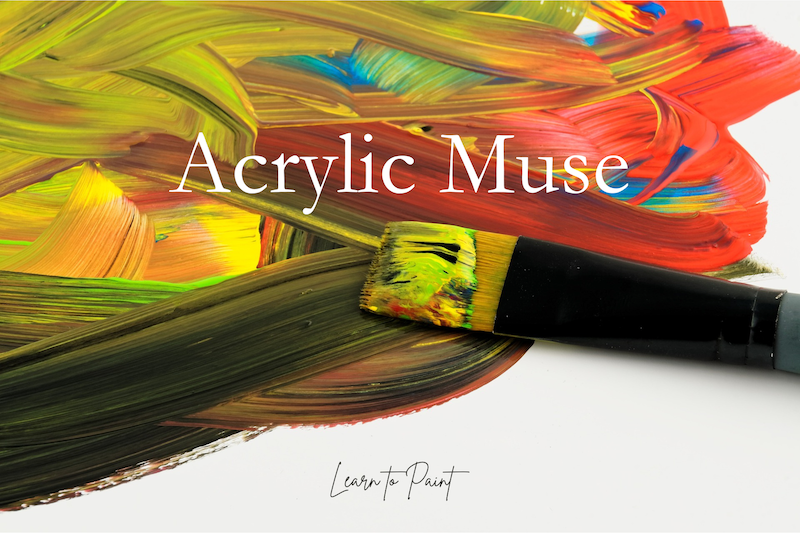Acrylic Paint Packaging & How it Affects Your User Experience
Over the years, I’ve used many brands of acrylic paint for experimentation, small & large scale projects and for final product creation. The brands differ in character and cost (check out How to Paint with Acrylics HANDBOOK for the Absolute beginner for an overview of what you need to know when buying acrylic paints) and after you’ve been painting a while, you may develop a preference.
While choosing and experimenting with paints, you must consider product characteristics including the cost, dry time, pigment density and texture of the acrylics; all overriding (sometimes ‘make-or-break) factors in choosing your preferred brand. Another, less often discussed, feature of acrylic paints to consider as you experiment, is the packaging of your paints and how that packaging can affect your ‘user experience’ with the paint.
Here are four common packaging ‘types’ you will find when perusing the acrylic paint shelves at the art store.
- Small (2 oz or less) Barrel Bottles
- Tub Containers
- Metal Tubes
- Plastic Tubes
This type of packaging is usually used for beginner or starter sets of acrylic paints, sometimes with as many as 18 bottles per package. The paint in an 18 bottle set is most often runnier and less pigment-dense than higher grade acrylics.
 What I love about these paints is they are affordable and offer exciting colour options.
What I love about these paints is they are affordable and offer exciting colour options.
What’s not-so-great, is the reality that too many colour choices is not always good. As a new painter, simplicity is key, and an overwhelming number of choices may stop you from getting started.
I’ve found also, that small (2 oz or less) bottles don’t offer enough paint to give a painter (any painter, new or experienced) an adequate sense of freedom to create. An environment of ‘not enough’, leads the painter to become consumed with efforts to conserve what little paint there is, as opposed to creating freely with it.
2. Tub Containers (also known as Jars)
The tub containers I have in my studio right now are big, each holding from 470 ml to 946 ml, depending on the brand.

What’s Good About Tubs of Paint
The generous amount of paint in each tub provides a sense of freedom when painting (no obsessing about whether I do, or do not have enough paint) and each tub will last for months, if not longer.
Water can easily be added to a near-empty tub of paint, providing opportunity to scrape up and use every bit of paint from the container.
What’s Not-So Good About Tubs of Paint
Tub containers have a tendency to be messy even if you are the most careful of painters.
Despite my absolute care in keeping all tools and product dispensers clean, paint always finds its way under the lid of my tub containers which dries there and causes the lid to become stuck to the container.
Tapping the lid of a container that’s been ‘glued on’ like this, with the back of a screwdriver or a hammer (or banging it on the edge of a sturdy table), will usually loosen dried paint enough to help you wrestle it open. I have found however, that repeated force applied to a paint tub lid can cause it to crack and break and, if this happens, it becomes necessary to find another way to make the lid air-tight again. I usually add a layer of plastic wrap onto the container, then screw the (broken) lid onto it, to create an air-tight seal.
Once you get into a tub container of paint, you’ll see there is no ‘dispense method’ built into the tub and you’ll need to add another implement to your painting kit. A plastic spoon is great for serving paint onto your palette and, although easy enough, it does create one extra item to be cleaned and stored.
3. Metal Tubes
I have limited experience with using paints that are packaged in metal tubes and admit they’re not as common as other forms of packaging, so you’re less likely to see them as an option when first setting out to the art store.
As I’ve said, my experience with metal tubes is limited, but what I’ve found is they are unreliable at keeping paints from drying out and they are difficult to use.
The inherent nature of metal means repeated use causes folds and bends in the tube’s metal that will then become fatigued and crack. The holes created by this causes paint to leak out from unexpected parts of the tube and also allows air into the tube, drying out the paint.
The instability of a metal tube also causes difficulty when unscrewing the cap of the tube; the unstructured character of the metal causes the top 1/4 of the tube to twist unnaturally each time the cap is counter-twisted to remove. Again, this causes metal fatigue, holes, leaks, and drying out of paint in the tube.
By far my favourite choice in acrylic paint packaging, is plastic tubes.
 Plastic Tubes are abundant at the art store, are sturdy, reliable at keeping paint dry, have lids that are easily opened and closed and are great for dispensing just the right amount of paint.
Plastic Tubes are abundant at the art store, are sturdy, reliable at keeping paint dry, have lids that are easily opened and closed and are great for dispensing just the right amount of paint.
Occasionally, I find the lids on
my plastic tubes stubbornly refuse to close all the way. This problem is easily overcome by simply removing dried paint from the dispensing tip or by remembering to wipe wet paint from the tip immediately after dispensing.
Ultimately, the packaging of your acrylic paint products may not be a deal-breaker in deciding which brands you use. It is worth considering though, and in the end, may be an important factor in the enjoyment (or frustration) you experience as you learn to paint.
*Interested to read more about how to chose the acrylic paint that’s best for you?
Check out this excellent article by wonderstreet.com, reviewing “…the top 19 brands of acrylic paint that are most frequently used by artists around the world…”.
This is an advanced look at the characteristics and pros & cons of 19 brands of acrylic paint, conveniently separated into Professional Quality and Student Grade paint categories.

